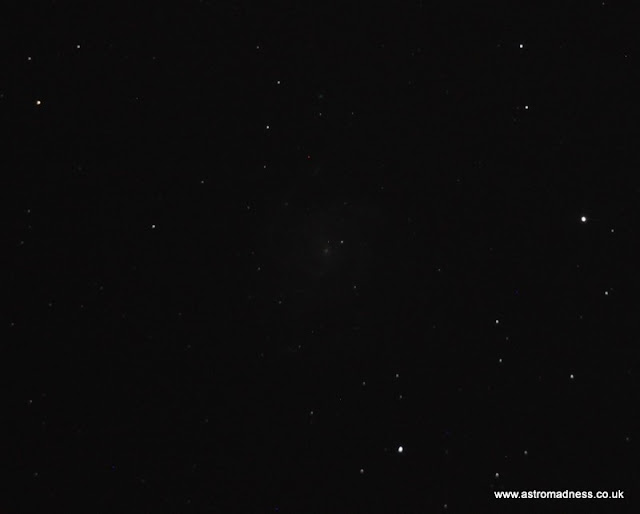Waiting For The Weather
M101 - Getting from RAW to the final picture.
One thing that dabbling with astrophotography gives you, is something to do if the weather for observing is rubbish. These last few weeks, the weather has been typically autumnal with little chance for getting the scope out at all. Then, we had the over-hyped (thanks to the wonderful UK media) 'Supermoon'. In essence, a normal full moon at closest perigee for a while. But, realistically, it looked just the same as any other full moon. And, as full moons do, it was too bright to really make any effort towards getting ready for any observing.
So, I've taken the opportunity to apply a couple of new things that I learned in my recent trip to Astrofarm about image processing. The more I study imaging, and the techniques used to enhance the data I collect with the camera, slowly but surely, I'm beginning to make small improvements.
I went back to re-look at some data I collected back at the beginning of August. I took a series of images of M101, a spiral galaxy called the Pinwheel Galaxy in Ursa Major. At the time, I was stacking images in Deep Sky Stacker, where I would do some basic levels adjustments before then processing the image further in GIMP2.
My first attempt at stacking produced an image was, to be frank, a disappointment. In fact, I don't have my original attempt at stacking because it was so poor, I just deleted it. But, somewhere over the last few years, I've heard someone say, never delete your source data. You never know when you might want it. Source data can take a minimum of a whole evening to collect. Sometimes, people can spend weeks or months collecting it even, so just deleting it is a big decision. A lot of work potentially gone with the push of a button.
This time, I used 30 x 60 second frames at ISO 800 plus 10 Dark frames, 10 BIAS frames and 10 FLATS. In a brief session on image processing with Andrew at Astrofarm, he showed me briefly what he does to start the image processing procedure. So, once I completed the stacking process, this time, I did not do any further processing in Deep Sky Stacker. I just saved the image as a tiff file. I've installed Adobe Photoshop CS2 as recommended, and have been using this to do any post stacking processing instead of GIMP2. There are plenty of tutorials on using CS2 on the web, so I've been checking some of those out too, and adding some of those techniques to the ones that Andrew showed me.
I couldn't tell you everything I've done along the way to get the latest image. A lot of it is trial and error. But, I guess the main purpose of this blog post was to demonstrate the difference between a single starting frame taken outside with the camera and scope, and, with stacking and processing, what you could possibly expect to achieve with fairly limited knowledge and understanding such as mine.
The following picture is a single frame taken on M101. I have cropped it so it is similar in orientation to the second image. Notice in the first image. there are few stars visible in the frame at all. Plus, you can only make out feint detail of the galaxy itself in the centre of the picture.
This second image is the result of the stacking and processing steps I took. Using some basic principles of adjusting the curves and levels in CS2, I've been able to bring more of the image out and make using of the hidden data. The processing steps have also revealed more stars in the field of view, and has allowed the core of the galaxy to stand out just enough. It's definitely not the brightest of images compared to some that you can find with a quick google search, but I'm pleased with it, which I guess is the most important thing.
Thanks for reading!




Comments
Post a Comment